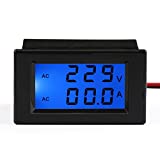For some time now I've had this isolation transformer and variac in storage.
Can't remember the spec on them but they're pretty hefty. Bought them as "old junk" ;D
After doing some research I'm thinking of hooking it up as follows:
Mains AC - fuse - on/off switch - isolation trafo - fuse - variac- Amp meter - Volt meter - fuse - outlet
This will be for DUT only, test equipment will be powered elsewhere with mains earth connected.
Does that hookup make sense?
There will be some tube amp tinkering, should I also put in a dimbulb somewhere?
I'm a bit concerned about inrush current. I've read about thermistors and time delay circuits. What do you do?
I'm thinking about finding an Ampere meter that reads 0-5 AC Amp, good choice?
Thanks in advance for any recommendations.
//Magnus
Can't remember the spec on them but they're pretty hefty. Bought them as "old junk" ;D
After doing some research I'm thinking of hooking it up as follows:
Mains AC - fuse - on/off switch - isolation trafo - fuse - variac- Amp meter - Volt meter - fuse - outlet
This will be for DUT only, test equipment will be powered elsewhere with mains earth connected.
Does that hookup make sense?
There will be some tube amp tinkering, should I also put in a dimbulb somewhere?
I'm a bit concerned about inrush current. I've read about thermistors and time delay circuits. What do you do?
I'm thinking about finding an Ampere meter that reads 0-5 AC Amp, good choice?
Thanks in advance for any recommendations.
//Magnus




